10 years in the making, the Louvre Abu Dhabi opens in the heart of Saadiyat Island and brings with it a new lease on the world
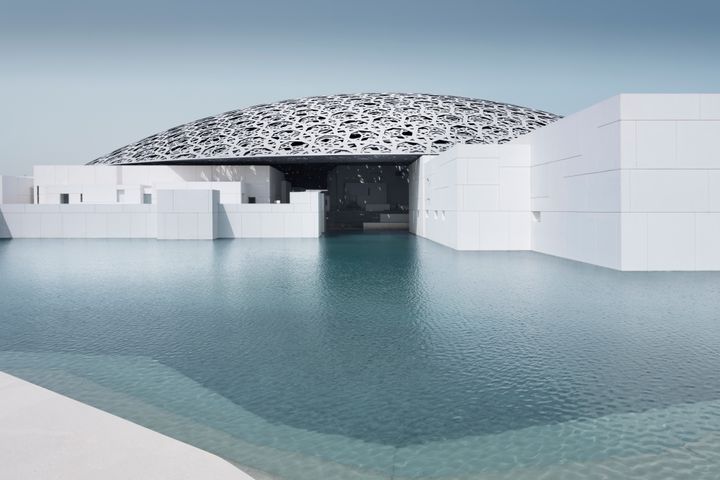
The Louvre Abu Dhabi
Art has seen and preserved it all. From the miraculous rise of man to the treacherous falls of empires, our collective history can be tracked through sculpture, printmaking, and even prehistoric cave paintings. Whether presenting the human form in clay or recording both society’s advancements and downfalls, artists like Abel Grimmer, with his 1595 Tower of Babel, show us how we’ve evolved, be in myth or reality. Different from the written word, art visually tells the story of the human journey, showing the ties that bind even when separated by time, miles, and mountains. It can open the dialogue to seeing humanity in a new light, to educate and inspire, the way the newly opened Louvre Abu Dhabi (LAD) hopes to do.
As the capital of the United Arab Emirates, Abu Dhabi has long been a beacon for the oil industry, building its wealth from the elemental resource. Established only 46 years ago, the UAE has strategically transformed itself from a small Bedouin coastal country into a mega-metropolis once envisioned only by futurists. However, over the past decade, Abu Dhabi has been working towards shifting its image to one that will liberate the city’s artists and instill a new passion for culture. That was the foundation for the Louvre Abu Dhabi, labeled the Middle East’s first universal museum, that recently opened its doors on November 11, 2017.
After a decade of planning, preparing, and an estimated $650 million to build, the 24,000 square meter venue came to fruition. Through a partnership with France, established in 2007, the museum has been long-awaited as a part of the expansion of Saadiyat Island.
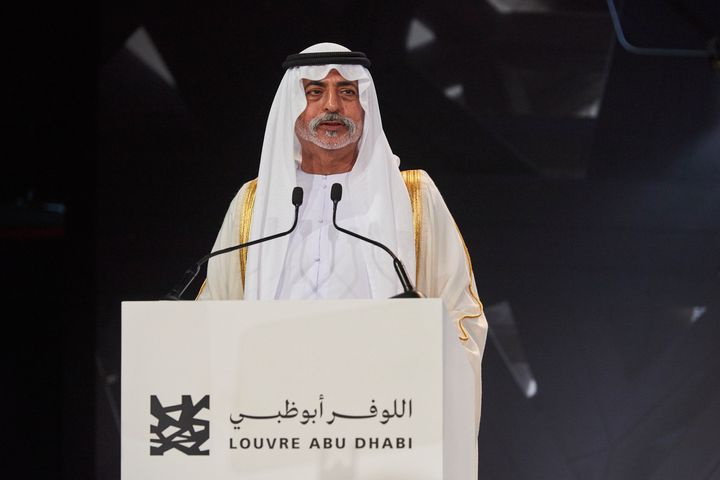
Sheikh Nahyan bin Mubarak Al Nahyan, Minister of Culture and Knowledge at the opening of Louvre Abu Dhabi
Placed under the latticework of the four layered dome creation of French architect Jean Nouvel, 620 pieces are displayed within the grandiose museum spread out across 12 chapters, 235 of which are from the Louvre Abu Dhabi’s own collection. Located partially over a still body of water, the venue slowly rising out of the water, is in itself a work of art.
Designed purposefully to take advantage of Abu Dhabi’s perennial sunshine, the dome, 180 meters in diameter, lets in small bursts of light as though pouring down like rain. “If I had an obsession, it would be with light, but each building is of a time and place,” architect Jean Nouvel expressed to The Art Newspaper. Inspired by traditional architectural use of the mashrabiya, the play on light allows for each moment, from sunrise to sunset, to be unique. Nouvels reasoning for the design is simple, “this is a museum in an Arab capital, where light and shade punctuate the view, creating their own sense of mystery and culture. In Arab culture, seeing the filtered light of a mashrabiya is very natural.”
The French native is no stranger to ambitious work, his previous designs include the Philharmonie de Paris and the Doha Tower. With a dome that weighs as much as the Eiffel Tower and 6,400 square meters of gallery space, the LAD has quickly become a pinnacle of the city's skyline.
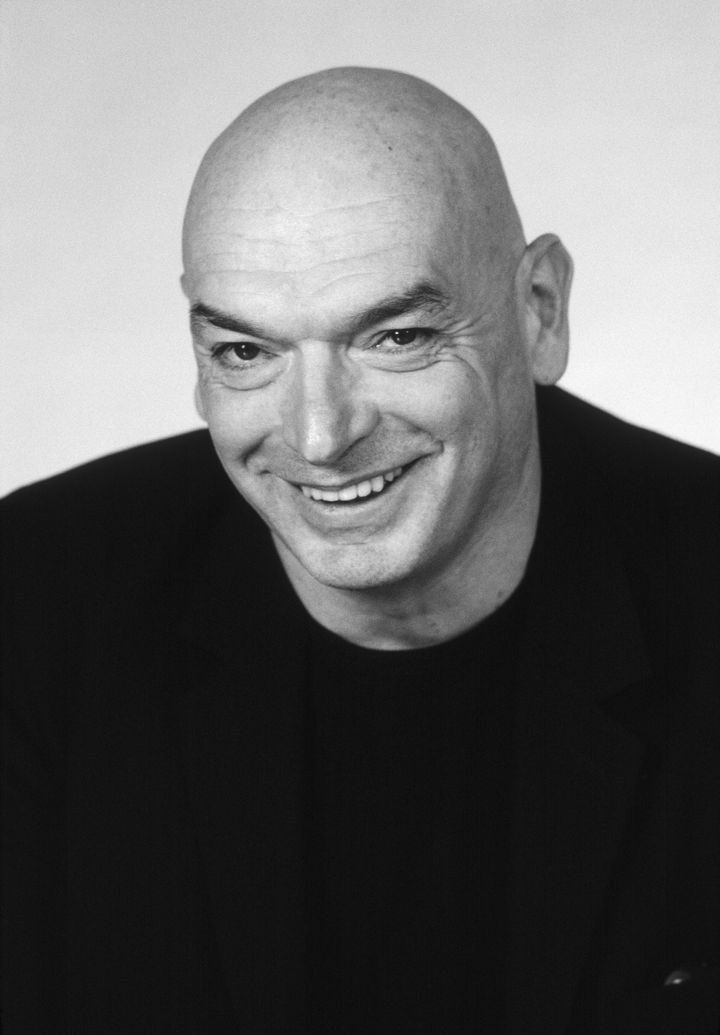
The Louvre Abu Dhabi architect Jean Nouvel
The collaboration between the UAE and France feels like an unlikely marriage that somehow bridges cultural gaps to show us we are more alike than we are different. With as many splendors on the inside as the outside, there’s a lot to experience. Firstly, it’s different from traditional museums opting in favor of a chronological layout as opposed to a geographical one. The story of man’s travels and discoveries start within the first chapter, the Great Vestibule. Cities spread out connected by lines marked on the floor with their native languages diversely displaying a multicultural map.
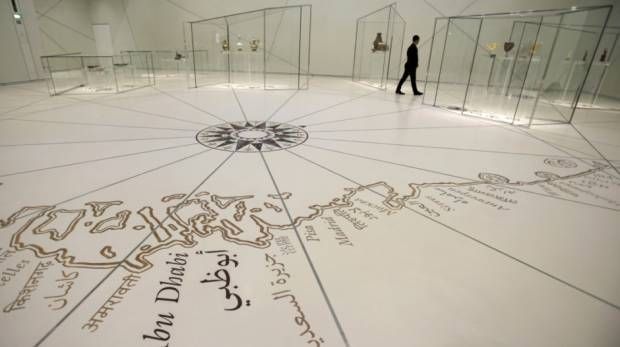
The Louvre Abu Dhabi Grand Vestibule floor
Many statuesque findings made miles apart yet dedicated to preserving human form show our fascination with one another yet the most unexpected findings are in chapter 6.
In a small dark room, laid out under a glass covering are the symbols of universal religions. The Holy Qur’an, a Gothic Bible and a Yemenite Torah all placed together, open to the same passage, to demonstrate our connection to one another. What the religions share is the idea of monotheism, though differing in their representation of the divine. For many, seeing these holy works together will help in finding common ground on a topic so close to the heart.
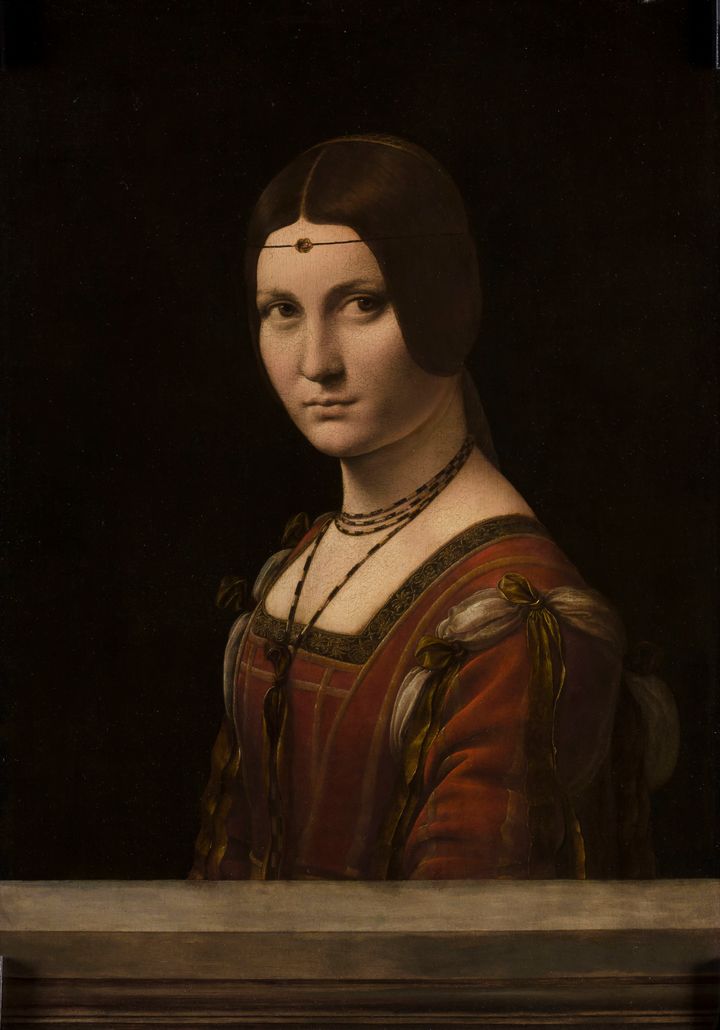
Leonardo da Vinci’s La Belle Ferronnière, 1495-1499
While much of the historic and ancient artifacts take up the first chapters, they lead to the more recent works of painters like Piet Mondrian, Yves Klein and Pablo Picasso. Van Gogh’s Self Portrait hangs just feet from Monet’s La gare Saint-Lazare and a chapter away from Da Vinci’s La Belle Ferronnière. Finishing the chapters are more modern artists like Omar Ba, Mounir Fatmi and the controversial Ai Weiwei with his 2016 Fountain of Light.
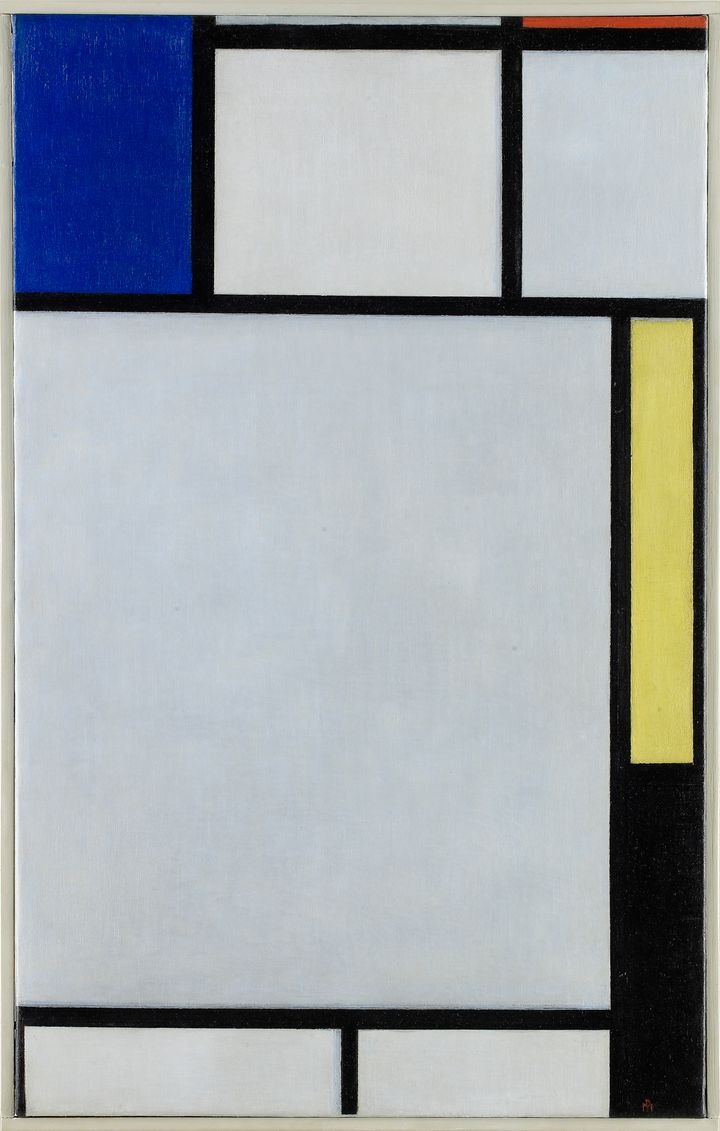
Piet Mondrian’s Composition with Blue, Red, Yellow and Black, 1922
However, a landmark of such proportions doesn’t come without its own concerns, especially when it comes to security. At the forefront of its conception, the Director of the Louvre Abu Dhabi, Manuel Rabate explains that establishing a reliable security system was instrumental in moving forward. “Although Abu Dhabi is without a doubt one of the most secure places in the region, and the world, the protection of the museum and its visitors is paramount and we have built our security systems according to the highest international standards. The head of security was one of our first appointments.” Scanners are placed at the entryway before visitors can step in to see Cy Twombly’s Untitled (I-IX) just feet away.
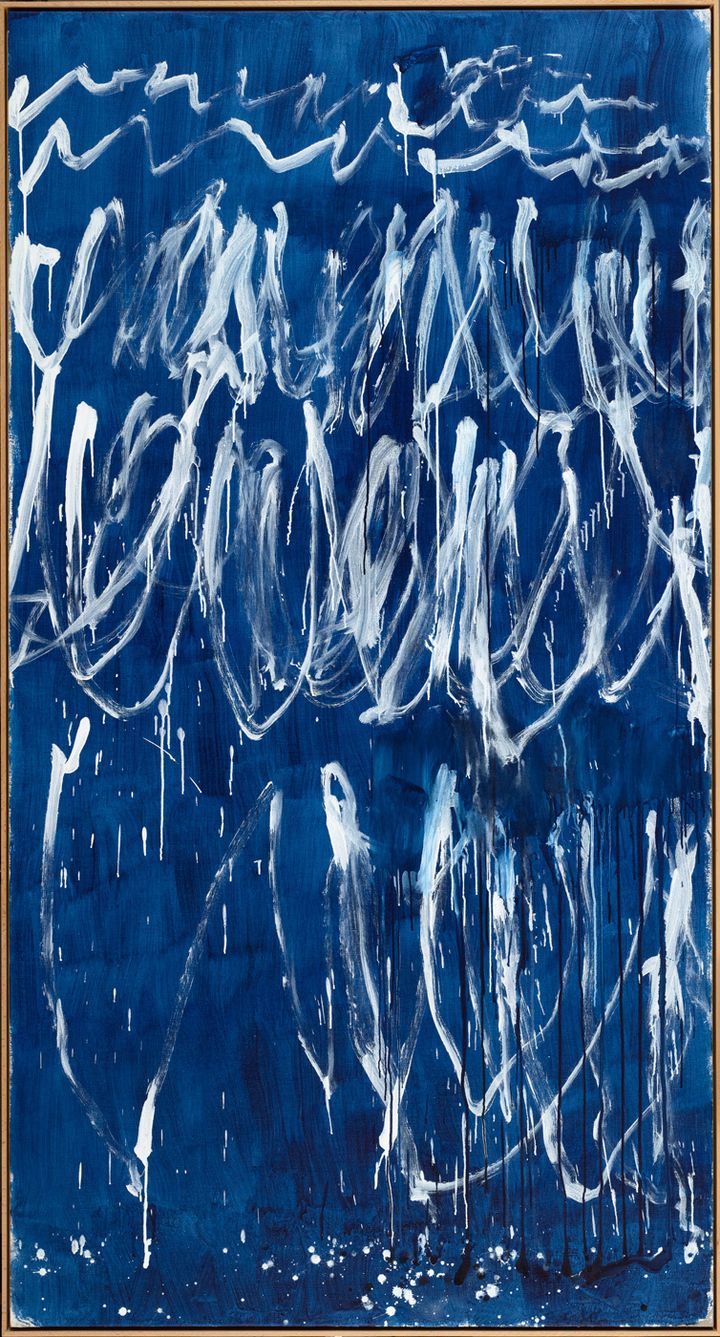
Cy Twombly’s Untitled (I-IX), 2008 (One of nine panels)
The LAD is just the first step in the government’s plan to further grow the city’s cultural reach. Although the museum borrows its name from the Parisian Louvre and a portion of the artifacts from 13 leading French museums in an intergovernmental agreement, it is still intrinsically dedicated towards enriching its home region. The LAD will be also open in an educational space making it a classroom as much as it is a museum.
Abu Dhabi clearly hopes to see new tourists visit the city with its welcoming charm, drawing people in and offering both old-world experiences with new-age design. To keep the imagery fresh, LAD will also be showing 4 individual exhibits throughout the year. The first opening in December, From One Louvre to Another. As it finds its identity in the midst of the ever-changing culture, the nation's capital will forever be evolving to offer something many haven’t even dreamt of.
Tickets for the museum start at AED 60 for adults over 22 years, AED 30 for those aged 13-22 years and free entry for children 13 years and younger. AED 30 for education professionals. For more information visit their website here.
